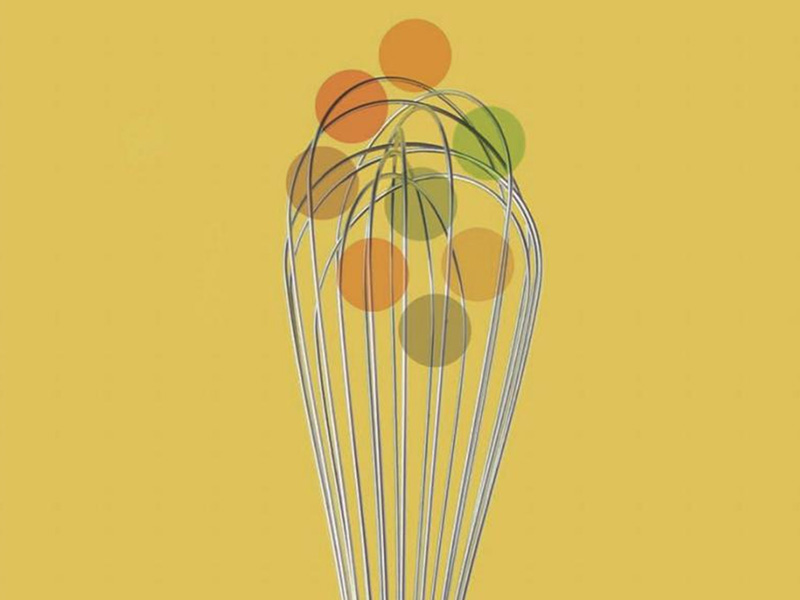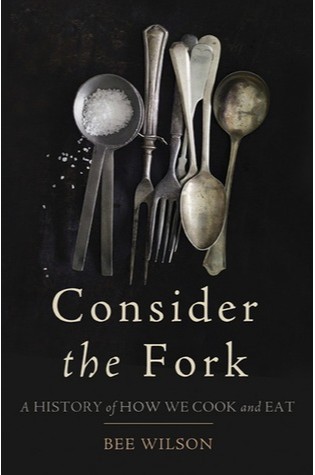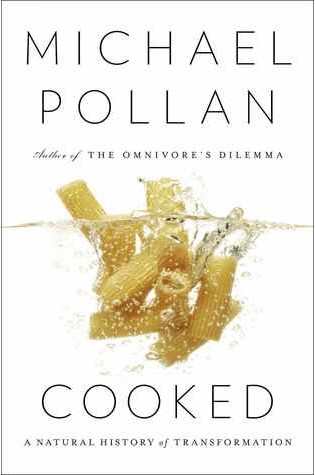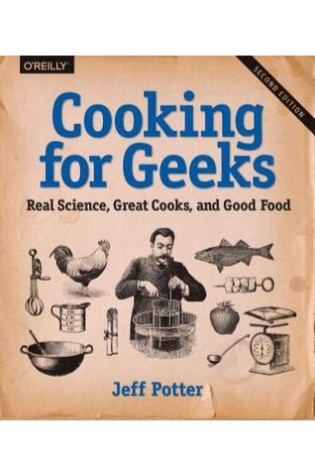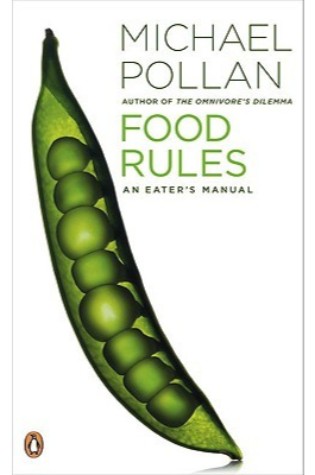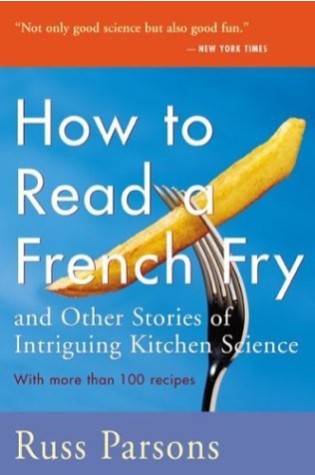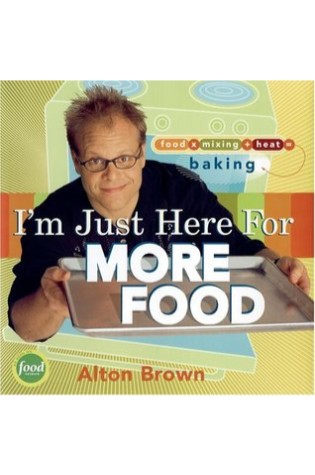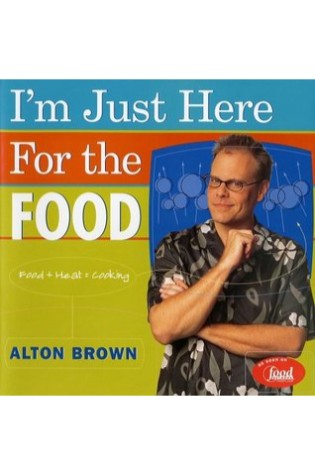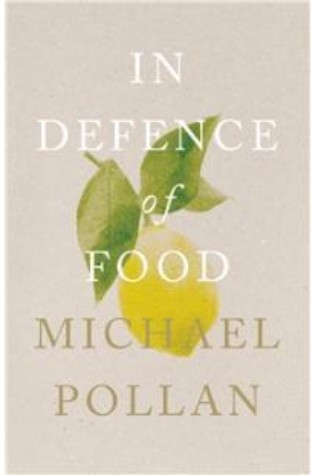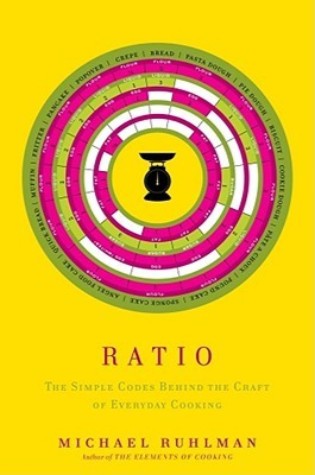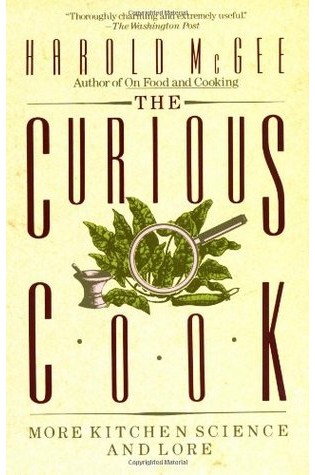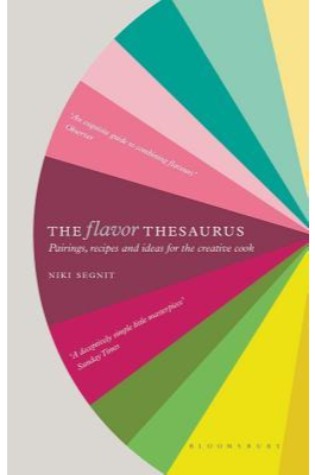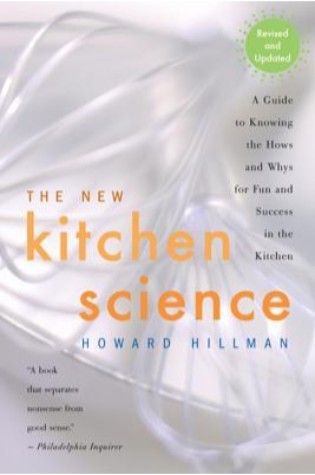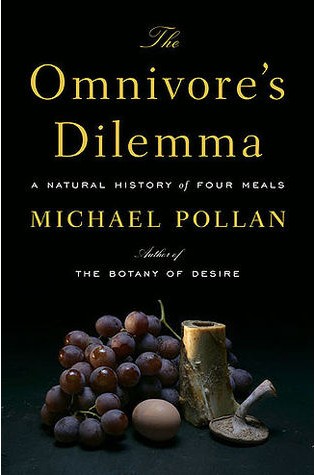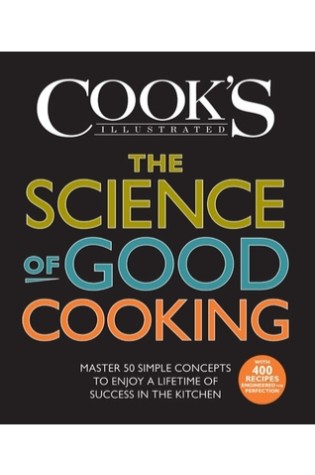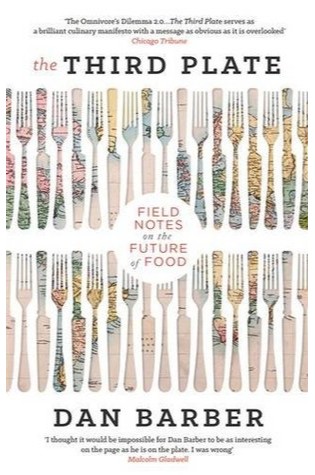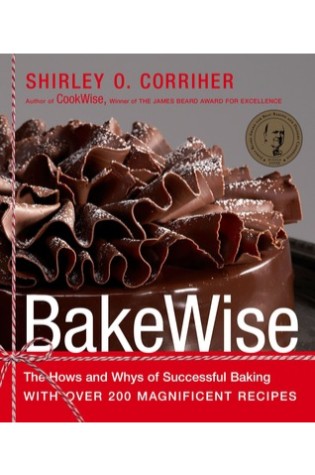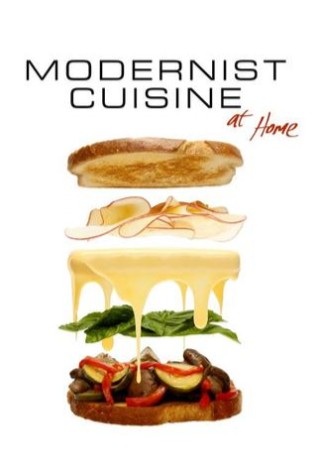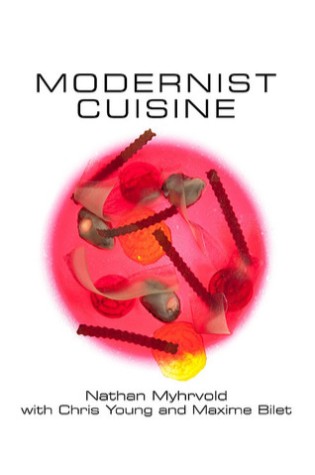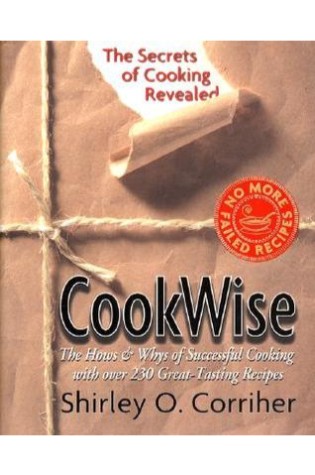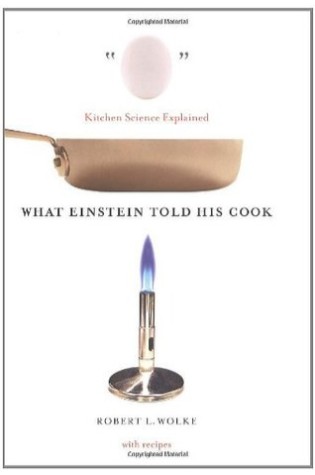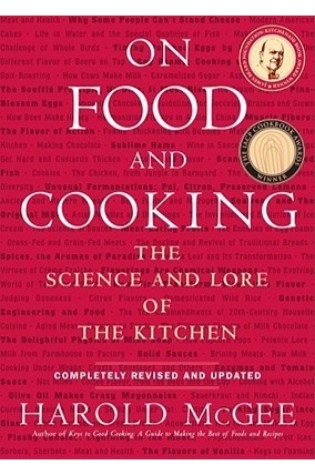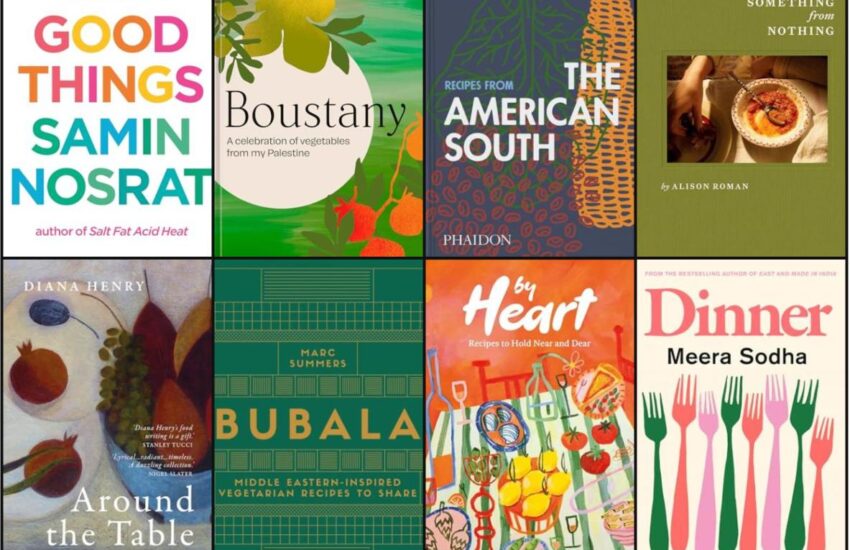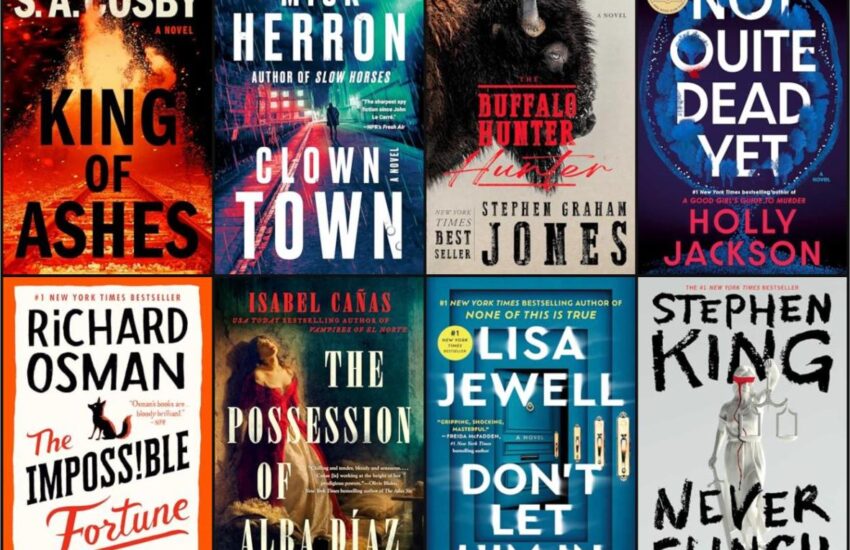The Best Gastronomy And Food Science Books
“What are the best books about Gastronomy and Food Science?” We looked at 135 of the top books, aggregating and ranking them so we could answer that very question!
The top 26 titles, all appearing on 2 or more “Best Gastronomy” book lists, are ranked below by how many lists they appear on. The remaining 100+ titles, as well as the lists we used are in alphabetical order at the bottom of the page.
Happy Scrolling!
Top 26 Gastronomy Books
26 .) A Day at elBulli by Ferran Adrià, Albert Adrià and Juli Soler
- Food52
- Tasting Table
“For the first time, A Day at elBulli: An Insight into the Ideas, Methods and Creativity of Ferran Adria allows unprecedented access to one of the world’s most famous, sought-after and mysterious restaurants. Having held three Michelin stars since 1997, and regularly voted ‘Best Restaurant in the World’ by a panel of 500 industry professionals, elBulli has been at the very forefront of the restaurant scene since Ferran Adria became sole head chef in 1987.
Aimed at food enthusiasts as well as industry professionals, the book documents all the activities and processes that make up just one day of service with stunning colour photography of the kitchens, staff, creative workshop, dishes, the restaurant itself and its striking surroundings near the town of Roses, north east of Barcelona. The book starts with daybreak at 6.15 am, then shows visits to the local markets to source ingredients from 7.00 am, Ferran’s arrival at the workshop, his morning creative experimentation session, the arrival of the rest of the brigade at 2.3 0 pm to begin the mise-en-place for the evening, the preparations of each guest’s menu, the daily tasks of the front of house team, and the arrival of the first guests for dinner from 7.45 pm until the last guests’ departure by 2.00 am.”
25 .) Alinea by Grant Achatz
- Alibris
- Tasting Table
A pioneer in American cuisine, chef Grant Achatz represents the best of the molecular gastronomy movement–brilliant fundamentals and exquisite taste paired with a groundbreaking approach to new techniques and equipment. ALINEA showcases Achatz’s cuisine with more than 100 dishes (totaling 600 recipes) and 600 photographs presented in a deluxe volume. Three feature pieces frame the book: Michael Ruhlman considers Alinea’s role in the global dining scene, Jeffrey Steingarten offers his distinctive take on dining at the restaurant, and Mark McClusky explores the role of technology in the Alinea kitchen. Buyers of the book will receive access to a website featuring video demonstrations, interviews, and an online forum that allows readers to interact with Achatz and his team.
24 .) Building a Meal: From Molecular Gastronomy to Culinary Constructivism by Hervé This
- Goodreads
- Alibris
“An internationally renowned chemist, popular television personality, and bestselling author, Hervé This heads the first laboratory devoted to molecular gastronomythe scientific exploration of cooking and eating. By testing recipes that have guided cooks for centuries, and the various dictums and maxims on which they depend, Hervé This unites the head with the hand in order to defend and transform culinary practice.
With this new book, Hervé This’s scientific project enters an exciting new phase. Considering the preparation of six bistro favoriteshard-boiled egg with mayonnaise, simple consommé, leg of lamb with green beans, steak with French fries, lemon meringue pie, and chocolate moussehe isolates the exact chemical properties that tickle our senses and stimulate our appetites. More important, he connects the mind and the stomach, identifying methods of culinary construction that appeal to our memories, intelligence, and creativity. By showing that the creation of a meal is as satisfying as its consumption, Herve This recalibrates the balance between food and our imaginations. The result is a revolutionary perspective that will tempt even the most casual cooks to greater flights of experimentation.”
23 .) Consider the Fork: A History of How We Cook and Eat by Bee Wilson
- Goodreads
- Goodreads 2
Since prehistory, humans have braved sharp knives, fire, and grindstones to transform raw ingredients into something delicious–or at least edible. But these tools have also transformed how we consume, and how we think about, our food. In Consider the Fork, award-winning food writer Bee Wilson takes readers on a wonderful and witty tour of the evolution of cooking around the world, revealing the hidden history of objects we often take for granted. Technology in the kitchen does not just mean the Pacojets and sous-vide machines of the modern kitchen, but also the humbler tools of everyday cooking and eating: a wooden spoon and a skillet, chopsticks and forks. Blending history, science, and personal anecdotes, Wilson reveals how our culinary tools and tricks came to be and how their influence has shaped food culture today. The story of how we have tamed fire and ice and wielded whisks, spoons, and graters, all for the sake of putting food in our mouths, Consider the Fork is truly a book to savor.
22 .) Cooked: A Natural History of Transformation by Michael Pollan
- Goodreads
- Goodreads 2
“In Cooked, Michael Pollan explores the previously uncharted territory of his own kitchen. Here, he discovers the enduring power of the four classical elements—fire, water, air, and earth—to transform the stuff of nature into delicious things to eat and drink. Apprenticing himself to a succession of culinary masters, Pollan learns how to grill with fire, cook with liquid, bake bread, and ferment everything from cheese to beer.
Each section of Cooked tracks Pollan’s effort to master a single classic recipe using one of the four elements. A North Carolina barbecue pit master tutors him in the primal magic of fire; a Chez Panisse–trained cook schools him in the art of braising; a celebrated baker teaches him how air transforms grain and water into a fragrant loaf of bread; and finally, several mad-genius “fermentos” (a tribe that includes brewers, cheese makers, and all kinds of picklers) reveal how fungi and bacteria can perform the most amazing alchemies of all. The reader learns alongside Pollan, but the lessons move beyond the practical to become an investigation of how cooking involves us in a web of social and ecological relationships. Cooking, above all, connects us.”
21 .) Cooking for Geeks by Jeff Potter
- Food52
- XO Jane
“Why do we cook the way we do? Are you the innovative type, used to expressing your creativity instead of just following recipes? Do you want to learn to be a better cook or curious about the science behind what happens to food as it cooks?
More than just a cookbook, Cooking for Geeks applies your curiosity to discovery, inspiration, and invention in the kitchen. Why do we bake some things at 350°F/175°C and others at 375°F/190°C? Why is medium-rare steak so popular? And just how quickly does a pizza cook if we overclock an oven to 1,000 F/540 C? Author and cooking geek Jeff Potter provides the answers to these questions and more, and offers his unique take on recipes — from the sweet (a patent-violating chocolate chip cookie) to the savory (slow-cooked brisket). “
20 .) Food Rules: An Eater’s Manual by Michael Pollan
- Goodreads
- Goodreads 2
Eating doesn’t have to be so complicated. In this age of ever-more elaborate diets and conflicting health advice, Food Rules brings welcome simplicity to our daily decisions about food. Written with clarity, concision, and wit that has become bestselling author Michael Pollan’s trademark, this indispensable handbook lays out a set of straightforward, memorable rules for eating wisely, one per page, accompanied by a concise explanation. It’s an easy-to-use guide that draws from a variety of traditions, suggesting how different cultures through the ages have arrived at the same enduring wisdom about food. Whether at the supermarket or an all-you-can-eat buffet, this is the perfect guide for anyone who ever wondered, “What should I eat?”
19 .) How to Read a French Fry: And Other Stories of Intriguing Kitchen Science by Russ Parsons
- Epicurean
- Goodreads
In a book widely hailed for its entertaining prose and provocative research, the award-winning Los Angeles Times food journalist Russ Parsons examines the science behind ordinary cooking processes. Along the way he dispenses hundreds of tips and the reasons behind them, from why you should always begin cooking beans in cold water, to why you should salt meat before sautéing it, to why it’s a waste of time to cook a Vidalia onion. Filled with sharp-witted observations (“Frying has become synonymous with minimum-wage labor, yet hardly anyone will try it at home”), intriguing food trivia (fruit deprived of water just before harvest has superior flavor to fruit that is irrigated up to the last moment ), and recipes (from Oven-Steamed Salmon with Cucumber Salad to Ultimate Strawberry Shortcake), How to Read a French Fry contains all the ingredients you need to become a better cook.
18 .) I’m Just Here for More Food: Food x Mixing + Heat = Baking
- Food52
- Epicurean
Alton Brown explores the science behind breads, cakes, cookies, pies, and custards, explaining it in his own inimitable style. Recipes cover all the basics, from pie crust to funnel cake to cheese souffle. The book also contains appendices and equipment lists.
17 .) I’m Just Here for the Food: Food + Heat = Cooking
- Food52
- Epicurean
Blending humor, wisdom, history, pop culture, science, and basic cooking knowledge, the host of Food Network’s Good Eats presents an indispensable, innovative, and instructional cooking guide that features various cooking techniques accompanied by a “master” recipe for each technique, and provides a vast array of food-related tips and advice.
16 .) In Defense of Food: An Eater’s Manifesto by Michael Pollan
- Goodreads
- Goodreads 2
Humans used to know how to eat well, Pollan argues. But the balanced dietary lessons that were once passed down through generations have been confused, complicated, and distorted by food industry marketers, nutritional scientists, and journalists-all of whom have much to gain from our dietary confusion. As a result, we face today a complex culinary landscape dense with bad advice and foods that are not “real.” These “edible foodlike substances” are often packaged with labels bearing health claims that are typically false or misleading. Indeed, real food is fast disappearing from the marketplace, to be replaced by “nutrients,” and plain old eating by an obsession with nutrition that is, paradoxically, ruining our health, not to mention our meals. Michael Pollan’s sensible and decidedly counterintuitive advice is: “Don’t eat anything that your great-great grandmother would not recognize as food.”
15 .) Ratio: The Simple Codes Behind the Craft of Everyday Cooking by Michael Ruhlman
- Goodreads
“When you know a culinary ratio, it’s not like knowing a single recipe, it’s instantly knowing a thousand.
Why spend time sorting through the millions of cookie recipes available in books, magazines, and on the Internet? Isn’t it easier just to remember 1-2-3? That’s the ratio of ingredients that always make a basic, delicious cookie dough: 1 part sugar, 2 parts fat, and 3 parts flour. From there, add anything you want—chocolate, lemon and orange zest, nuts, poppy seeds, cinnamon, cloves, nutmeg, almond extract, or peanut butter, to name a few favorite additions. Replace white sugar with brown for a darker, chewier cookie. Add baking powder and/or eggs for a lighter, airier texture.
Ratios are the starting point from which a thousand variations begin.”
14 .) The Curious Cook: More Kitchen Science and Lore by Harold McGee
- Epicurean
- Goodreads
When Harold McGee’s On Food and Cooking was published in 1984, it proved to be one of the sleepers of the year, eventually going through eight hardcover printings. It was hailed as a minor masterpiece” and reviewers around the world prasied McGee for writing the first book for the home cook that translated into plain English what scientist had discovered about our foods. Like why chefs beat eggs whites in copper bowls and why onions make us cry.”
13 .) The Flavour Thesaurus: Pairings, Recipes and Ideas for the Creative Cook by Niki Segnit
- Goodreads
- Goodreads 2
Ever wondered why one flavour works with another? Or lacked inspiration for what to do with a bundle of beetroot? The Flavour Thesaurus is the first book to examine what goes with what, pair by pair. The book is divided into flavour themes including Meaty, Cheesy, Woodland and Floral Fruity. Within these sections it follows the form of Roget’s Thesaurus, listing 99 popular ingredients alphabetically, and for each one suggesting flavour matchings that range from the classic to the bizarre. You can expect to find traditional pairings such as pork & apple, lamb & apricot, and cucumber & dill; contemporary favourites like chocolate & chilli, and goat’s cheese & beetroot; and interesting but unlikely-sounding couples including black pudding & chocolate, lemon & beef, blueberry & mushroom, and watermelon & oyster. There are nearly a thousand entries in all, with 200 recipes and suggestions embedded in the text. Beautifully packaged, The Flavour Thesaurus is not only a highly useful, and covetable, reference book for cooking – it might keep you up at night reading.
12 .) The New Kitchen Science: A Guide to Know the Hows and Whys for Fun and Success in the Kitchen
- Epicurean
- Goodreads
In this revised and updated edition of the book that thousands of cooks have turned to when they have a question, the science authority Howard Hillman provides the latest findings about everything from cooking methods, equipment, and food storage to nutrition and health concerns.
11 .) The Omnivore’s Dilemma: A Natural History of Four Meals by Michael Pollan
- Goodreads
- Goodreads 2
What should we have for dinner?” To one degree or another this simple question assails any creature faced with a wide choice of things to eat. Anthropologists call it the omnivore’s dilemma. Choosing from among the countless potential foods nature offers, humans have had to learn what is safe, and what isn’t—which mushrooms should be avoided, for example, and which berries we can enjoy. Today, as America confronts what can only be described as a national eating disorder, the omnivore’s dilemma has returned with an atavistic vengeance. The cornucopia of the modern American supermarket and fast-food outlet has thrown us back on a bewildering landscape where we once again have to worry about which of those tasty-looking morsels might kill us. At the same time we’re realizing that our food choices also have profound implications for the health of our environment. The Omnivore’s Dilemma is bestselling author Michael Pollan’s brilliant and eye-opening exploration of these little-known but vitally important dimensions of eating in America.
10 .) The Science of Good Cooking by the Editors of Cook’s Illustrated
- Goodreads
- Tasting Table
Unlock a lifetime of successful cooking with this groundbreaking new volume from the editors of Cook’s Illustrated, the magazine that put food science on the map. Organized around 50 core principles our test cooks use to develop foolproof recipes, The Science of Good Cooking is a radical new approach to teaching the fundamentals of the kitchen. Fifty unique experiments from the test kitchen bring the science to life, and more than 400 landmark Cook’s Illustrated recipes (such as Old-Fashioned Burgers, Classic Mashed Potatoes, andPerfect Chocolate Chip Cookies) illustrate each of the basic principles at work. These experiments range from simple to playful to innovative – showing you why you should fold (versus stir) batter for chewy brownies, why you whip egg whites with sugar, and why the simple addition of salt can make meat juicy. A lifetime of experience isn’t the prerequisite for becoming a good cook; knowledge is. Think of this as an owner’s manual for your kitchen.
9 .) The Third Plate: Field Notes on the Future of Food by Dan Barber
- Goodreads
- Goodreads 2
“At the heart of today’s optimistic farm-to-table food culture is a dark secret: the local food movement has failed to change how we eat. It has also offered a false promise for the future of food. Our concern over factory farms and chemically grown crops might have sparked a social movement, but chef Dan Barber, recently showcased on Netflix’s Chef’s Table, reveals that even the most enlightened eating of today is ultimately detrimental to the environment and to individual health. And it doesn’t involve truly delicious food. Based on ten years of surveying farming communities around the world, Barber’s The Third Plate offers a radical new way of thinking about food that will heal the land and taste good, too.
The Third Plate is grounded in the history of American cuisine over the last two centuries. Traditionally, we have dined on the “first plate,” a classic meal centered on a large cut of meat with few vegetables. Thankfully, that’s become largely passé. The farm-to-table movement has championed the “second plate,” where the meat is from free-range animals and the vegetables are locally sourced. It’s better-tasting, and better for the planet, but the second plate’s architecture is identical to that of the first. It, too, is damaging—disrupting the ecological balances of the planet, causing soil depletion and nutrient loss—and in the end it isn’t a sustainable way to farm or eat.”
8 .) BakeWise by Shirley O. Corriher
- Food52
- Mother Earth News
“Great day in the morning, BakeWise is out! You are holding the book that everyone has been waiting for. Sure enough, Shirley did not hold back—it’s all here. Lively and fascinating, BakeWise reads like a mystery novel as we follow sleuth Shirley while she solves everything from why cakes and muffins can be dry to génoise deflation and why the cookie crumbles.
With her years of experience from big-pot cooking for 140 teenage boys and her classic French culinary training to her work as a research biochemist at Vanderbilt University School of Medicine, Shirley manages to put two and two together in unique and exciting ways. Some information is straight out of Shirley’s wildly connecting brain cells. She describes useful techniques, such as brushing puff pastry with ice water—not just brushing off the flour—making the puff pastry easier to roll. The result? Higher, lighter, and flakier pastry. And you won’t find these recipes anywhere else, not even on the Internet. She can help you make moist cakes; flaky pie crusts; shrink-proof perfect meringues that won’t leak but still cut like a dream; big, crisp cream puffs; amazing French pastries; light génoise; and crusty, incredibly flavorful, open-textured French breads, such as baguettes and fougasses.”
7 .) Modernist Cuisine at Home by Nathan Myhrvold
- Food52
- Alibris
“Modernist Cuisine is an interdisciplinary team in Bellevue, Washington, founded and led by Nathan Myhrvold. The group includes scientists, research and development chefs, and a full editorial team all dedicated to advancing the state of culinary art through the creative application of scientific knowledge and experimental techniques.
Change the way you think about food: Modernist Cuisine at Home opens up a new world of culinary possibility and innovation for passionate and curious home cooks. In this vibrantly illustrated 456-page volume you’ll learn how to stock a modern kitchen, to master Modernist techniques, and to make hundreds of stunning new recipes, including pressure-cooked caramelized carrot soup, silky smooth mac and cheese, and sous vide, braised short ribs. You’ll also learn about the science behind your favorite dishes, what’s really happening when you roast a chicken, and why pressure cookers are perfect for making soup.”
6 .) Modernist Cuisine: The Art and Science of Cooking by Nathan Myhrvold
- Goodreads 2
- XO Jane
- Alibris
Modernist Cuisine: The Art and Science of Cooking is an encyclopedic treatment of cooking. Its six volumes of 2,438 pages explore the history of cuisine and explain the science of cooking in a way that’s accessible to both professional chefs and home cooks. Created by a team of scientists, chefs, editors, and writers, these volumes explore research spanning the field of culinary science, with careful attention to practicality and applicability in the kitchen. Through gorgeous illustrations and otherworldly techniques, this set will inspire you to innovate in your own kitchen.Illustrations: 3216 illustrations
5 .) The Food Lab: Better Home Cooking Through Science by J. Kenji López-Alt
- Tasting Table
- Goodreads
- Goodreads 2
“Ever wondered how to pan-fry a steak with a charred crust and an interior that’s perfectly medium-rare from edge to edge when you cut into it? How to make homemade mac ‘n’ cheese that is as satisfyingly gooey and velvety-smooth as the blue box stuff, but far tastier? How to roast a succulent, moist turkey (forget about brining!)―and use a foolproof method that works every time?
As Serious Eats’s culinary nerd-in-residence, J. Kenji López-Alt has pondered all these questions and more. In The Food Lab, Kenji focuses on the science behind beloved American dishes, delving into the interactions between heat, energy, and molecules that create great food. Kenji shows that often, conventional methods don’t work that well, and home cooks can achieve far better results using new―but simple―techniques. In hundreds of easy-to-make recipes with over 1,000 full-color images, you will find out how to make foolproof Hollandaise sauce in just two minutes, how to transform one simple tomato sauce into a half dozen dishes, how to make the crispiest, creamiest potato casserole ever conceived, and much more.”
4 .) CookWise: The Secrets of Cooking Revealed by Shirley O. Corriher
- Food52
- Mother Earth News
- Epicurean
- Goodreads
Offering “the hows and whys of successful cooking,” Cookwise, by well-known food writer and culinary sleuth Shirley O. Corriher, tells you how and why things happen in the course of food preparation. The more than 230 outstanding recipes featured not only please the palate, but demonstrate the various roles of ingredients and techniques—making Cookwise an invaluable reference for anyone who has ever wanted to improve on a recipe, make a cake moister, or a roast chicken juicier.
3 .) Molecular Gastronomy: Exploring the Science of Flavor by Hervé This
- Epicurean
- Goodreads
- Goodreads 2
- XO Jane
- Jessica Gavin
- Alibris
“Hervé This (pronounced “”Teess””) is an internationally renowned chemist, a popular French television personality, a bestselling cookbook author, a longtime collaborator with the famed French chef Pierre Gagnaire, and the only person to hold a doctorate in molecular gastronomy, a cutting-edge field he pioneered. Bringing the instruments and experimental techniques of the laboratory into the kitchen, This uses recent research in the chemistry, physics, and biology of food to challenge traditional ideas about cooking and eating. What he discovers will entertain, instruct, and intrigue cooks, gourmets, and scientists alike.
Molecular Gastronomy, This’s first work to appear in English, is filled with practical tips, provocative suggestions, and penetrating insights. This begins by reexamining and debunking a variety of time-honored rules and dictums about cooking and presents new and improved ways of preparing a variety of dishes from quiches and quenelles to steak and hard-boiled eggs. He goes on to discuss the physiology of flavor and explores how the brain perceives tastes, how chewing affects food, and how the tongue reacts to various stimuli. Examining the molecular properties of bread, ham, foie gras, and champagne, the book analyzes what happens as they are baked, cured, cooked, and chilled. “
2 .) What Einstein Told His Cook: Kitchen Science Explained by Robert L. Wolke
- Tasting Table
- Epicurean
- Goodreads
- Goodreads 2
- Jessica Gavin
- Food52
Do you wish you understood the science of foods, but don’t want to plow through dry technical books? What Einstein Told His Cook is like having a scientist at your side to answer your questions in plain, nontechnical terms. Chemistry professor and syndicated Washington Post food columnist Robert L. Wolke provides over 100 reliable and witty explanations, while debunking misconceptions and helping you to see through confusing advertising and labeling. In “Sweet Talk” you will learn that your taste buds don’t behave the way you thought they did, that starch is made of sugar, and that raw sugar isn’t raw. Did you know that roads have been paved with molasses? Why do cooked foods turn brown? What do we owe to Christopher Columbus’s mother-in-law? In “The Salt of the Earth” you will learn about the strange salts in your supermarket. Does sea salt really come from the sea? (Don’t bet on it.) Why do we salt the water for boiling pasta? And how can you remove excess salt from oversalted soup? (You may be surprised.) In “The Fat of the Land” you will learn the difference between a fat and a fatty acid, what makes them saturated or unsaturated, and that nonfat cooking sprays are mostly fat. Why don’t the amounts of fats on food labels add up? Why does European butter taste better than ours? In “Chemicals in the Kitchen” you will learn what’s in your tap water, how baking powder and baking soda differ, and what MSG does to food.
1 .) On Food and Cooking: The Science and Lore of the Kitchen by Harold McGee
- Food52
- Tasting Table
- Epicurean
- Goodreads
- Goodreads 2
- Mother Earth News
- XO Jane
“Harold McGee’s On Food and Cooking is a kitchen classic. Hailed by Time magazine as “”a minor masterpiece”” when it first appeared in 1984, On Food and Cooking is the bible to which food lovers and professional chefs worldwide turn for an understanding of where our foods come from, what exactly they’re made of, and how cooking transforms them into something new and delicious.
Now, for its twentieth anniversary, Harold McGee has prepared a new, fully revised and updated edition of On Food and Cooking. He has rewritten the text almost completely, expanded it by two-thirds, and commissioned more than 100 new illustrations. As compulsively readable and engaging as ever, the new On Food and Cooking provides countless eye-opening insights into food, its preparation, and its enjoyment.
On Food and Cooking pioneered the translation of technical food science into cook-friendly kitchen science and helped give birth to the inventive culinary movement known as “”molecular gastronomy.”” Though other books have now been written about kitchen science, On Food and Cooking remains unmatched in the accuracy, clarity, and thoroughness of its explanations, and the intriguing way in which it blends science with the historical evolution of foods and cooking techniques.”
The 100+ Additional Best Food Science Books
| # | Books | Author | Lists |
| (Titles Appear On 1 List Each) | |||
| 27 | 32 Yolks: From My Mother’s Table to Working the Line | Eric Ripert | Goodreads 2 |
| 28 | A Cook’s Tour: Global Adventures in Extreme Cuisines | Anthony Bourdain | Goodreads 2 |
| 29 | A History of the World in 6 Glasses | Tom Standage | Goodreads 2 |
| 30 | America’s test kitchen | ||
| 31 | American Regional Cuisine | The Art Institutes | Jessica Gavin |
| 32 | Animal, Vegetable, Miracle: A Year of Food Life | Barbara Kingsolver | Goodreads 2 |
| 33 | Arzak Secrets | Juan Mari Arzak | Tasting Table |
| 34 | Betty Crocker’s New Picture Cookbook | XO Jane | |
| 35 | Bread Science | Emily Buehler | Food52 |
| 36 | Brewing Microbiology | Elsevier | |
| 37 | Carnivore | Michael Symon | XO Jane |
| 38 | Chemistry in Your Kitchen | Matthew Hartings | Alibris |
| 39 | Comfort Me with Apples: More Adventures at the Table | Ruth Reichl | Goodreads 2 |
| 40 | Cook-Book Decoder or Culinary Alchemy Explained | Epicurean | |
| 41 | Cooking for Geeks: Real Science, Great Cooks, and Good Food | Jeff Potter | Goodreads |
| 42 | culinary artistry | Andrew Dornenburg | |
| 43 | Culinary Reactions: The Everyday Chemistry of Cooking | Simon Quellen Field | Goodreads |
| 44 | Delicious! | Ruth Reichl | Goodreads 2 |
| 45 | Eating Animals | Jonathan Safran Foer | Goodreads 2 |
| 46 | Edible Selby | Todd Selby | XO Jane |
| 47 | Elementary Food Science (Food Science Texts Series) 4th Edition | Ernest Vieira | Jessica Gavin |
| 48 | Essentials of Classic Italian Cooking | Marcella Hazan | Goodreads 2 |
| 49 | Everything I Want to Do Is Illegal: War Stories from the Local Food Front | Joel Salatin | Goodreads |
| 50 | Fast Food Nation: The Dark Side of the All-American Meal | Eric Schlosser | Goodreads |
| 51 | First Bite: How We Learn to Eat | Bee Wilson | Goodreads 2 |
| 52 | Food Forensics: The Health Ranger’s Guide to Foods that Harm and Foods that Heal | Mike Adams | Goodreads |
| 53 | Food Matters: A Guide to Conscious Eating with More Than 75 Recipes | Mark Bittman | Goodreads |
| 54 | Food Politics: How the Food Industry Influences Nutrition and Health | Marion Nestle | Goodreads |
| 55 | Food Processing Technology | Elsevier | |
| 56 | Food Protection and Security | Elsevier | |
| 57 | Food Safety and Quality Systems in Developing Countries | Elsevier | |
| 58 | Food Science | Norman N. Potter | Goodreads |
| 59 | Food: A Love Story | Jim Gaffigan | Goodreads 2 |
| 60 | French Lessons: Adventures with Knife, Fork, and Corkscrew | Peter Mayle | Goodreads 2 |
| 61 | Garde Manger: The Art and Craft of the Cold Kitchen | The Culinary Institute of America | Jessica Gavin |
| 62 | Garlic and Sapphires: The Secret Life of a Critic in Disguise | Ruth Reichl | Goodreads 2 |
| 63 | Grain Brain: The Surprising Truth about Wheat, Carbs, and Sugar–Your Brain’s Silent Killers | David Perlmutter | Goodreads |
| 64 | Gulp: Adventures on the Alimentary Canal | Mary Roach | Goodreads |
| 65 | Heat: An Amateur’s Adventures as Kitchen Slave, Line Cook, Pasta-Maker, and Apprentice to a Dante-Quoting Butcher in Tuscany | Bill Buford | Goodreads 2 |
| 66 | Hervé This’s Molecular Gastronomy | ||
| 67 | History of Food | Maguelonne Toussaint-Samat | Goodreads 2 |
| 68 | How Not to Die: Discover the Foods Scientifically Proven to Prevent and Reverse Disease | Michael Greger | Goodreads |
| 69 | How to Be a Domestic Goddess | Nigella Lawson | XO Jane |
| 70 | Ideas in Food | Food52 | |
| 71 | International Cuisine | The Art Institutes | Jessica Gavin |
| 72 | Introduction to Food Engineering | Elsevier | |
| 73 | It Must’ve Been Something I Ate: The Return of the Man Who Ate Everything | Jeffrey Steingarten | Goodreads 2 |
| 74 | Japanese Cooking: A Simple Art | Shizuo Tsuji | Goodreads 2 |
| 75 | Julie and Julia: 365 Days, 524 Recipes, 1 Tiny Apartment Kitchen: How One Girl Risked Her Marriage, Her Job, and Her Sanity to Master the Art of Living | Julie Powell | Goodreads 2 |
| 76 | Keys to Good Cooking: A Guide to Making the Best of Foods and Recipes | Mother Earth News | |
| 77 | Kitchen Confidential: Adventures in the Culinary Underbelly | Anthony Bourdain | Goodreads 2 |
| 78 | Kitchen Mysteries | Hervé This | Tasting Table |
| 79 | Let Them Eat Flax: 70 All-New Commentaries on the Science of Everyday Food & Life | Epicurean | |
| 80 | Like Water for Chocolate | Laura Esquivel | Goodreads 2 |
| 81 | Liquid Intelligence | Dave Arnold | Tasting Table |
| 82 | Meals to Come: A History of the Future of Food | Warren Belasco | Goodreads |
| 83 | Medium Raw: A Bloody Valentine to the World of Food and the People Who Cook | Anthony Bourdain | Goodreads 2 |
| 84 | Mindless Eating: Why We Eat More Than We Think | Brian Wansink | Goodreads |
| 85 | Molecular Gastronomy at Home:… | Jozef Youssef | Alibris |
| 86 | Molecular Gastronomy:… | Jose Sanchez | Alibris |
| 87 | Moto: The Cookbook | Homaro Cantu | Alibris |
| 88 | My Life in France | Julia Child | Goodreads 2 |
| 89 | No Reservations: Around the World on an Empty Stomach | Anthony Bourdain | Goodreads 2 |
| 90 | Nutrient Power: Heal Your Biochemistry and Heal Your Brain | William J. Walsh | Goodreads |
| 91 | On Baking: A Textbook of Baking and Pastry Fundamentals (2nd Edition) | The Art Institutes | Jessica Gavin |
| 92 | Pandora’s Lunchbox: How Processed Food Took Over the American Meal | Melanie Warner | Goodreads |
| 93 | Pie | Ken Haedrich | XO Jane |
| 94 | Plant Factory | Elsevier | |
| 95 | Proof: The Science of Booze | Adam Rogers | Goodreads |
| 96 | Safe Food: Bacteria, Biotechnology, and Bioterrorism | Marion Nestle | Goodreads |
| 97 | Salt Sugar Fat: How the Food Giants Hooked Us | Michael Moss | Goodreads |
| 98 | Salt: A World History | Mark Kurlansky | Goodreads 2 |
| 99 | Slow Food Nation: Why Our Food Should Be Good, Clean, and Fair | Carlo Petrini | Goodreads |
| 100 | Spice: The History of a Temptation | Jack Turner | Goodreads 2 |
| 101 | Sustainable Protein Sources | Elsevier | |
| 102 | Swindled: From Poison Sweets to Counterfeit Coffee—The Dark History of the Food Cheats | Bee Wilson | Goodreads |
| 103 | Tartine Bread | Chad Robertson | Goodreads 2 |
| 104 | Tasty: The Art and Science of What We Eat | John McQuaid | Goodreads |
| 105 | Tender at the Bone: Growing Up at the Table | Ruth Reichl | Goodreads 2 |
| 106 | The Apprentice: My Life in the Kitchen | Jacques Pépin | Goodreads 2 |
| 107 | The Art of Eating | M.F.K. Fisher | Goodreads 2 |
| 108 | The Big Fat Surprise: Why Butter, Meat and Cheese Belong in a Healthy Diet | Nina Teicholz | Goodreads |
| 109 | The Botany of Desire: A Plant’s-Eye View of the World | Michael Pollan | Goodreads |
| 110 | The Case Against Sugar | Gary Taubes | Goodreads |
| 111 | The Cookbook Decoder, or Culinary Alchemy Explained, | Arthur E. Grosser | Food52 |
| 112 | The Dorito Effect: The Surprising New Truth About Food and Flavor | Mark Schatzker | Goodreads |
| 113 | The Elements of Taste | Gray Kunz | Goodreads |
| 114 | The Fat Duck Cookbook | Heston Blumenthal | Food52 |
| 115 | The Flavor Bible: The Essential Guide to Culinary Creativity, Based on the Wisdom of America’s Most Imaginative Chefs | Karen Page | Goodreads 2 |
| 116 | The Inquisitive Cook | Epicurean | |
| 117 | The Kitchen as Laboratory: Reflections on the Science of Food and Cooking | César Vega | Goodreads |
| 118 | The Man Who Ate Everything | Jeffrey Steingarten | Goodreads 2 |
| 119 | The Nasty Bits: Collected Varietal Cuts, Usable Trim, Scraps, and Bones | Anthony Bourdain | Goodreads 2 |
| 120 | The New Making of a Cook | Food52 | |
| 121 | The Physiology of Taste: Or, Meditations on Transcendental Gastronomy | Jean Anthelme Brillat-Savarin | Goodreads 2 |
| 122 | The Professional Chef | Culinary Institute of America | Goodreads 2 |
| 123 | The Science of Good Food: The Ultimate Reference on How Cooking Works | David Joachim | Goodreads |
| 124 | The Sharper Your Knife, the Less You Cry: Love, Laughter, and Tears at the World’s Most Famous Cooking School | Kathleen Flinn | Goodreads 2 |
| 125 | The Soul of a Chef: The Journey Toward Perfection | Michael Ruhlman | Goodreads 2 |
| 126 | The Way We Eat: Why Our Food Choices Matter | Peter Singer | Goodreads |
| 127 | The Zen of Fish: The Story of Sushi, from Samurai to Supermarket | Trevor Corson | Goodreads 2 |
| 128 | Thug Kitchen: The Official Cookbook: Eat Like You Give a F*ck | Thug Kitchen | Goodreads 2 |
| 129 | Tomatoland: How Modern Industrial Agriculture Destroyed Our Most Alluring Fruit | Barry Estabrook | Goodreads |
| 130 | Waiter Rant: Thanks for the Tip-Confessions of a Cynical Waiter | The Waiter | Goodreads 2 |
| 131 | What Einstein Told His Cook 2: The Sequel | Epicurean | |
| 132 | When French Women Cook | Food52 | |
| 133 | Why We Get Fat: And What to Do About It | Gary Taubes | Goodreads |
| 134 | Wild Fermentation: The Flavor, Nutrition, and Craft of Live-Culture Foods | Sandor Ellix Katz | Goodreads |
| 135 | Wine Science | Elsevier | |
11 Best Gastronomy and Food Science Book Sources/Lists
| Source | Article |
| Alibris | Best Selling Molecular gastronomy Books |
| Elsevier | Food Science |
| Epicurean | Food Geeks: The Almost Definitive Guide to Pop Food Science Books |
| Food52 | Favourite food science books? |
| Goodreads | Popular Food Science Books |
| Goodreads 2 | Popular Gastronomy Books |
| Jessica Gavin | FOOD SCIENCE STUDY MATERIALS |
| Mother Earth News | 4 Excellent Food Science Books |
| Best books to read on food science? | |
| Tasting Table | Science Nonfiction |
| XO Jane | The Very Best Books About Cooking and Food Science And A Defense Of “Food Porn” |
